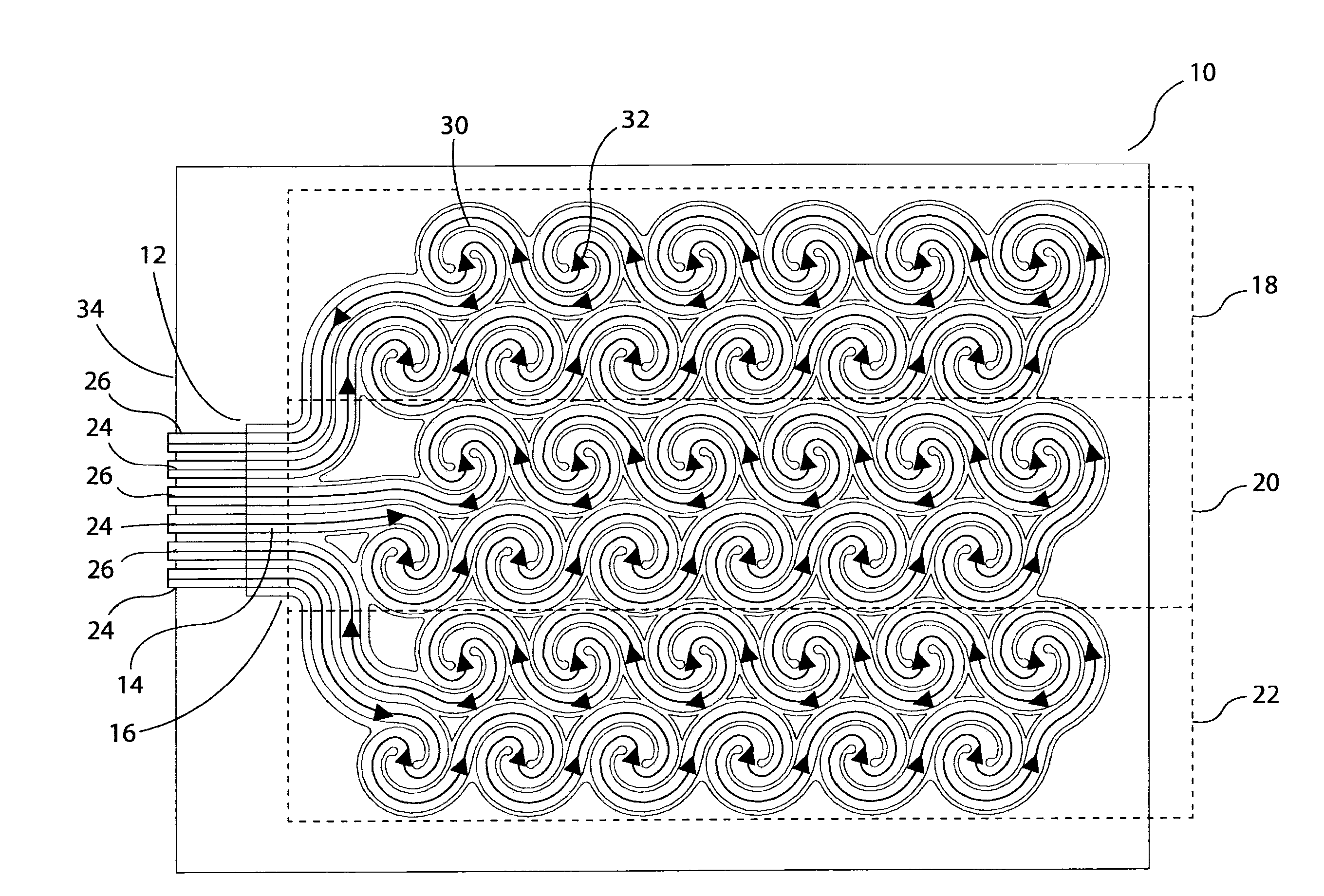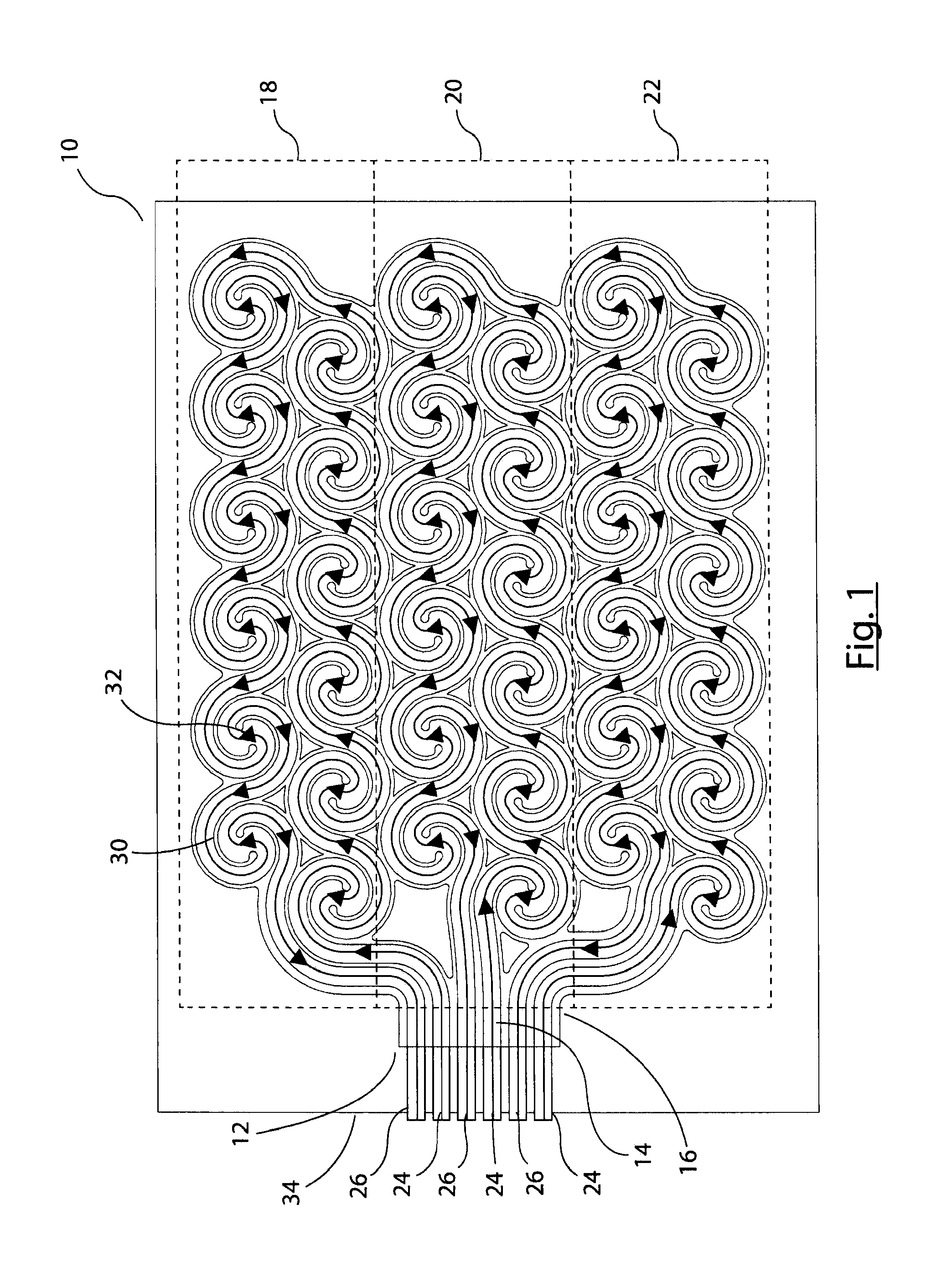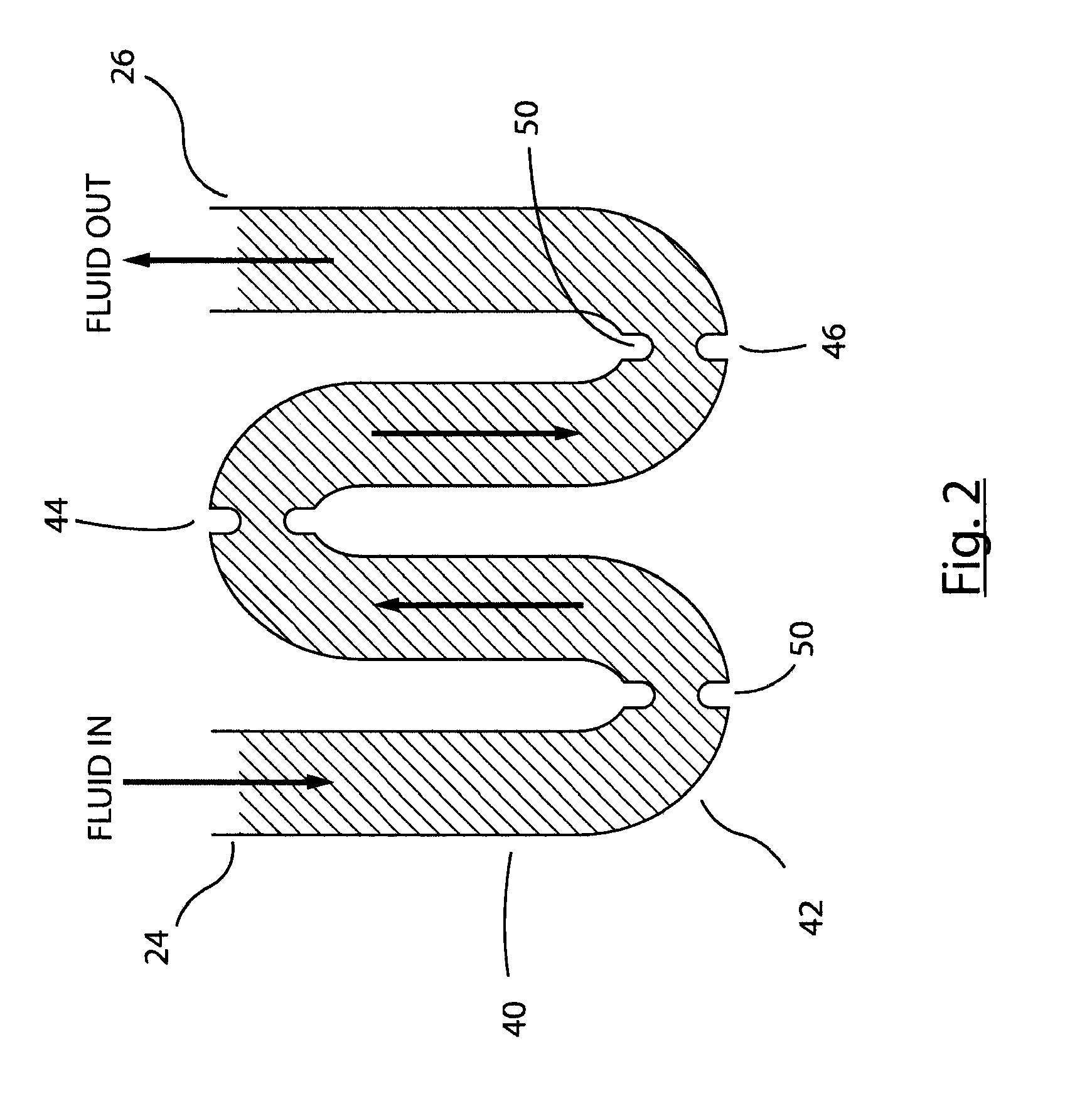Thermoregulation interface pack and assembly
a technology of interface packs and thermoregulation, applied in the direction of therapeutic heating, therapeutic cooling, contraceptive devices, etc., can solve the problems of inability to control the flow, location or heat transfer of fluids in the interface pack, and the inability to control the fluid position in the interface pack
- Summary
- Abstract
- Description
- Claims
- Application Information
AI Technical Summary
Benefits of technology
Problems solved by technology
Method used
Image
Examples
Embodiment Construction
[0037]Described below are various embodiments of temperature regulated interface pack, which is designed to be conformed around a part of a patient's body such as a limb or the like. The teachings therein, however, are not limited to an interface pack of a specific form, as the interface pack could have any shape suitable for the particular treatment desired for a patient. In some embodiments, the interface pack could be in the form of a sleeve or garment into which part of the patient's body to be treated can be inserted.
[0038]The interface pack is intended for use with a temperature regulation system which includes a pump, heating and / or cooling elements for heating fluid which is then pumped via the pump into the conduits of the interface pack. It is envisaged that such a system would provide one or more temperature sensors able to sense the temperature of fluid in the interface pack or the temperature of the interface pack. Such sensors may be provided within the system or as pa...
PUM
 Login to View More
Login to View More Abstract
Description
Claims
Application Information
 Login to View More
Login to View More - R&D
- Intellectual Property
- Life Sciences
- Materials
- Tech Scout
- Unparalleled Data Quality
- Higher Quality Content
- 60% Fewer Hallucinations
Browse by: Latest US Patents, China's latest patents, Technical Efficacy Thesaurus, Application Domain, Technology Topic, Popular Technical Reports.
© 2025 PatSnap. All rights reserved.Legal|Privacy policy|Modern Slavery Act Transparency Statement|Sitemap|About US| Contact US: help@patsnap.com



